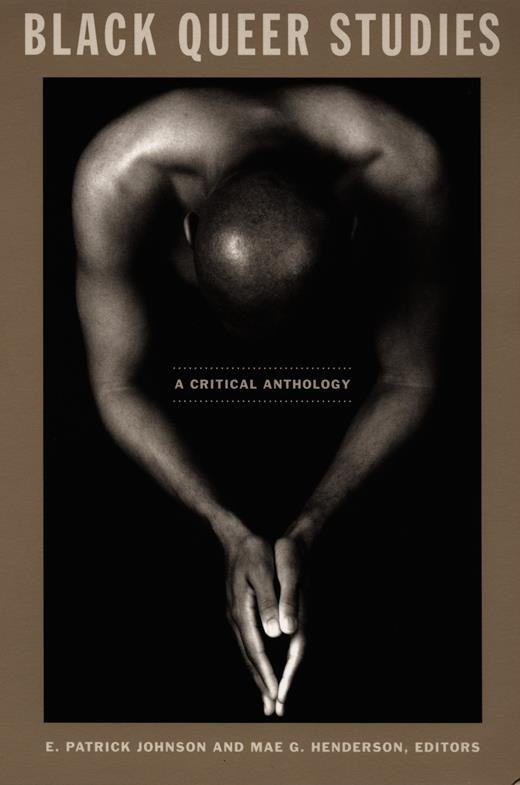Kara Keeling
“‘Joining the Lesbians’: Cinematic Regimes of Black Lesbian Visibility,” in Black Queer Studies: A Critical Anthology (2005)
“Reframed within the context of a visual terrain that is the product of dominant historical processes and, hence, supportive of hegemonic relations in oftentimes contradictory ways, discussions of ‘black lesbian visibility’ must take into consideration questions concerning what needs and interests are being furthered by the images that currently are recognizable as ‘black lesbian.’
“[W]hat ‘black lesbian film’ often throws out of the image it designates as ‘black lesbian’ includes precisely that which might challenge the logical connections that currently rationalize existing social relations, including some of those that support homophobia, classism, heterosexism, sexism, and racism. Like the other texts that comprise ‘black lesbian film’ and ‘black lesbian film culture,’ this essay constructs its object of analysis (in this case, ‘black lesbian film’ itself) in order to enter into the ‘continuously contingent, unguaranteed, political argument and debate’ that it claims is staged by that object…Each selection of what will be included in the category ‘black lesbian,’ of what will be retained from the appearance of an image that is recognizable as ‘black lesbian,’ is simultaneously an exclusion of those elements that threaten the appearance of ‘black lesbian.’”
“[B]ecause it re-creates the processes whereby Cheryl chooses what from the available past will support her own needs and interests as a ‘black lesbian filmmaker’ and, hence, what will appear in the image that the film-within-a-film designates and puts into circulation as ‘black lesbian,’ The Watermelon Woman allows for a different possibility to be perceived in the image that Cheryl calls ‘black lesbian,’ one that remains hostile to the world Cheryl claims as hers because it is inassimilable into that world’s logic. That possibility might collect the ‘stone butches,’ the ‘special friends,’ ‘the studs,’ ‘the femmes,’ ‘the woman-lovers,’ and ‘the queers’ that were part of the working-class social milieu to which Fae Richards herself belonged and make those ambivalent, destabilizing, and unstable forces of desire and community cohere as a collective expression of a multifarious ‘we’ that complicates any innocent notion of ‘the one’ who says, ‘I am a black lesbian filmmaker.’”
The Witch's Flight: The Cinematic, the Black Femme, and the Image of Common Sense (2007)
[coming soon]
Feature 3
Mauris egestas at nibh nec finibus. In sit amet felis malesuada, feugiat purus eget, varius mi.
